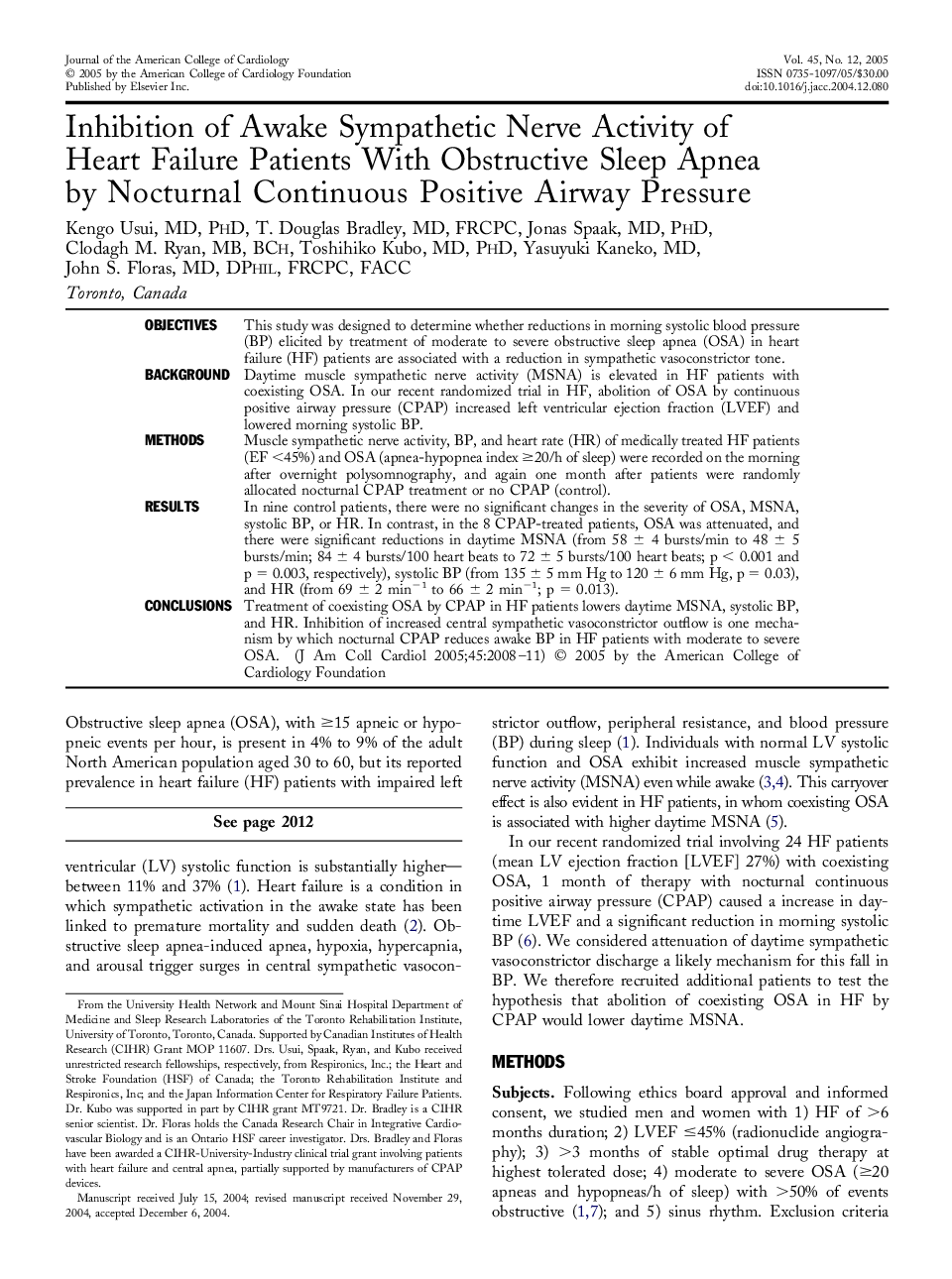| Article ID | Journal | Published Year | Pages | File Type |
|---|---|---|---|---|
| 2954520 | Journal of the American College of Cardiology | 2011 | 4 Pages |
ObjectivesThis study was designed to determine whether reductions in morning systolic blood pressure (BP) elicited by treatment of moderate to severe obstructive sleep apnea (OSA) in heart failure (HF) patients are associated with a reduction in sympathetic vasoconstrictor tone.BackgroundDaytime muscle sympathetic nerve activity (MSNA) is elevated in HF patients with coexisting OSA. In our recent randomized trial in HF, abolition of OSA by continuous positive airway pressure (CPAP) increased left ventricular ejection fraction (LVEF) and lowered morning systolic BP.MethodsMuscle sympathetic nerve activity, BP, and heart rate (HR) of medically treated HF patients (EF <45%) and OSA (apnea-hypopnea index ≥20/h of sleep) were recorded on the morning after overnight polysomnography, and again one month after patients were randomly allocated nocturnal CPAP treatment or no CPAP (control).ResultsIn nine control patients, there were no significant changes in the severity of OSA, MSNA, systolic BP, or HR. In contrast, in the 8 CPAP-treated patients, OSA was attenuated, and there were significant reductions in daytime MSNA (from 58 ± 4 bursts/min to 48 ± 5 bursts/min; 84 ± 4 bursts/100 heart beats to 72 ± 5 bursts/100 heart beats; p < 0.001 and p = 0.003, respectively), systolic BP (from 135 ± 5 mm Hg to 120 ± 6 mm Hg, p = 0.03), and HR (from 69 ± 2 min−1to 66 ± 2 min−1; p = 0.013).ConclusionsTreatment of coexisting OSA by CPAP in HF patients lowers daytime MSNA, systolic BP, and HR. Inhibition of increased central sympathetic vasoconstrictor outflow is one mechanism by which nocturnal CPAP reduces awake BP in HF patients with moderate to severe OSA.
